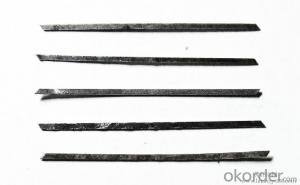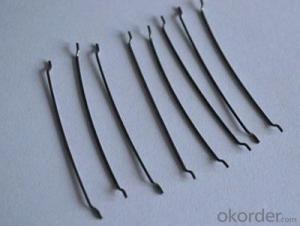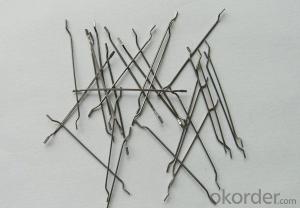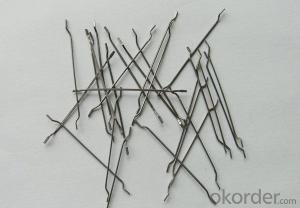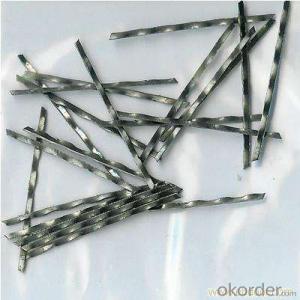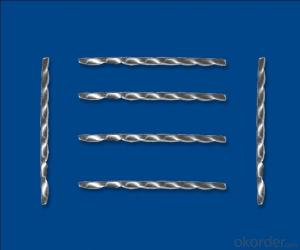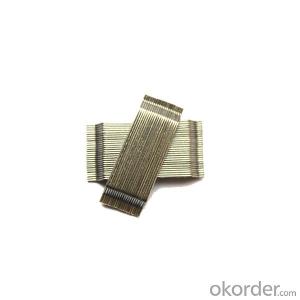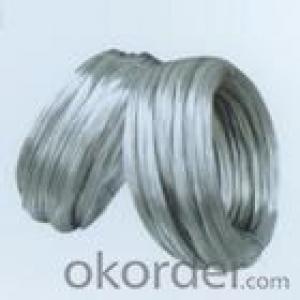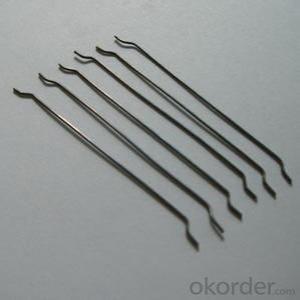Steel Fiber Loose For Concrete Reinforcement From China
- Loading Port:
- Tianjin
- Payment Terms:
- TT OR LC
- Min Order Qty:
- 5 kg
- Supply Capability:
- 30000 kg/month
OKorder Service Pledge
OKorder Financial Service
You Might Also Like
Quick Details
Place of Origin: China (Mainland)
Model Number: HT-MC
Material: Color Steel
certificated: ISO 9001
Specifications
Hooked steel fiber:
1.Diameter:0.4mm-1.0mm
2.Length: 25mm-60mm
3.Material: low carbon steel wire
4.Feature: excellent tensile,high tenacity,against cracking,impact and fatigue
5.Uses: highway road surface,tunnel,building,airport road surface and so on .
Micro steel fiber:
1.Material: low carbon steel wire,copper coated
Diameter:0.2mm --0.25mm
Length: 12mm-14mm
Tensile strength:>2850Mpa
2.Feature:Excellent tensile, bending and shearing strength, resistance against cracking, impact and fatigue.
3.Use:It is widely used for buildings, road surface, bridges, tunnels, airport road surface, water conservancy projects, military engineering, and all kinds of building products.
Straight steel fiber:
1) Material: low carbon steel wire
2) Diameter: 0.4mm
3) Length: 18mm-35mm
4) Tensile strength: >1000Mpa
5) Feature: excellent tensile, high tenacity, against cracking, impact and fatigue
6) Uses: highway road surface, tunnel, building, airport road surface and so on.
Picture
Steel fiber
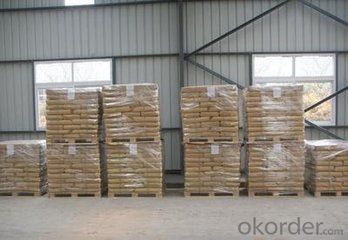
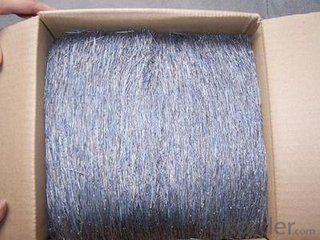
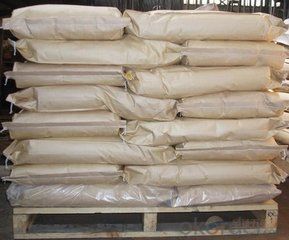
FAQ
certificated: ISO 9001
Technical advantages of Daye steel fiber:
A. Improve mechanical performance of concrete
B. Provide uniform distribution throughout concrete with excellent mixing
C. No balling or caking by adopt correct mixing method
D. Reduce concrete volume
E.Save construction time and cost
F.Reduce excavation volume
G.Available for jointless floor.
- Q:Can melt extract stainless steel fiber be used in fiber-reinforced cementitious composites (FRCCs)?
- Yes, melt extract stainless steel fiber can be used in fiber-reinforced cementitious composites (FRCCs).
- Q:How does the addition of melt extract stainless steel fiber affect the permeability of concrete?
- The addition of melt extract stainless steel fiber tends to decrease the permeability of concrete.
- Q:Can melt extract stainless steel fiber be used in precast concrete beams or columns?
- Yes, melt extract stainless steel fiber can be used in precast concrete beams or columns. This type of fiber is commonly used as a reinforcement material in concrete structures due to its high strength and durability. The addition of stainless steel fiber can enhance the flexural and tensile strength of precast concrete beams and columns, making them more resistant to cracking and improving their overall performance. Additionally, stainless steel fibers have excellent corrosion resistance properties, which makes them suitable for use in environments where concrete structures are exposed to moisture or chemicals. Overall, using melt extract stainless steel fiber in precast concrete beams or columns can help increase their longevity and structural integrity.
- Q:Can melt extract stainless steel fiber be used in refractory concrete applications?
- Yes, melt extract stainless steel fiber can indeed be used in refractory concrete applications. Refractory concrete is a type of concrete that is designed to withstand high temperatures and retain its strength and structural integrity under extreme heat conditions. The addition of stainless steel fibers to refractory concrete can significantly enhance its thermal shock resistance, crack resistance, and overall mechanical properties. Melt extract stainless steel fibers are manufactured through a process called melt extraction, where molten stainless steel is rapidly cooled and solidified to form thin, elongated fibers. These fibers possess excellent thermal conductivity, high tensile strength, and good corrosion resistance, making them ideal for use in refractory concrete. The addition of stainless steel fibers to refractory concrete can improve its ability to resist thermal cracking and spalling caused by rapid temperature changes. The fibers act as reinforcement, distributing the stress across the concrete matrix and preventing the formation of cracks. This enhances the durability and longevity of refractory concrete in high-temperature environments. Furthermore, stainless steel fibers can also improve the mechanical properties of refractory concrete. They increase the tensile strength and flexural strength of the concrete, making it more resistant to mechanical stress and ensuring its structural integrity even at elevated temperatures. In summary, melt extract stainless steel fiber is a suitable material for use in refractory concrete applications. Its addition can enhance the thermal shock resistance, crack resistance, and mechanical properties of refractory concrete, making it more durable and reliable in high-temperature environments.
- Q:What is the recommended fiber geometry for melt extract stainless steel fiber in concrete?
- The recommended fiber geometry for melt extract stainless steel fiber in concrete is typically in the form of straight, smooth, and relatively long fibers.
- Q:Does melt extract stainless steel fiber improve the fatigue resistance of concrete?
- Yes, melt extract stainless steel fiber can improve the fatigue resistance of concrete. Stainless steel fibers are known for their high tensile strength and excellent corrosion resistance properties. When added to concrete, these fibers act as reinforcement and help to distribute stress more evenly throughout the material, reducing the likelihood of cracking and failure under cyclic loading conditions. The addition of melt extract stainless steel fiber to concrete can significantly enhance the fatigue resistance of the material. The fibers help to absorb and dissipate energy during loading and unloading cycles, thereby reducing the accumulation of microcracks and increasing the overall durability of the concrete. This improved fatigue resistance is particularly beneficial in structures subjected to repetitive or dynamic loading, such as bridges, pavements, and industrial floors. Furthermore, melt extract stainless steel fibers have a high aspect ratio, meaning they have a relatively large length compared to their diameter. This aspect ratio allows the fibers to effectively bridge across cracks that may occur in the concrete, preventing their propagation and enhancing the overall structural integrity of the material. In summary, the addition of melt extract stainless steel fiber to concrete can greatly improve its fatigue resistance by enhancing its ability to withstand cyclic loading. This reinforcement helps to prevent crack formation and propagation, resulting in a more durable and long-lasting concrete structure.
- Q:What is the effect of melt extract stainless steel fiber on the flexural toughness of concrete?
- The inclusion of melt extract stainless steel fiber in concrete has a significant effect on its flexural toughness. Stainless steel fibers are known for their high tensile strength and ductility, which helps in enhancing the flexural toughness of concrete. When stainless steel fibers are added to concrete, they act as reinforcement and provide additional strength to the material. These fibers are evenly distributed throughout the concrete matrix, creating a three-dimensional network that helps in resisting cracks and distributing the applied load more efficiently. The melt extract stainless steel fibers also improve the post-cracking behavior of concrete. When a load is applied, the fibers bridge the cracks that may form, effectively transferring the stress and preventing further propagation of cracks. This bridging effect enhances the ductility and energy absorption capacity of concrete, thereby increasing its flexural toughness. Studies have shown that the addition of melt extract stainless steel fibers can significantly increase the flexural toughness of concrete, leading to improved resistance against bending and impact forces. This is particularly beneficial in structural applications where concrete is subjected to dynamic loads or where enhanced durability and crack resistance are desired. Overall, the inclusion of melt extract stainless steel fiber in concrete positively affects its flexural toughness by providing reinforcement, improving post-cracking behavior, and enhancing its resistance to bending and impact forces.
- Q:Can melt extract stainless steel fiber be used in pre-stressed concrete applications?
- Indeed, in pre-stressed concrete applications, the utilization of melt extract stainless steel fiber is possible. Pre-stressed concrete is a concrete variant that gains strength through the application of internal stresses, achieved by tensioned steel wires or cables. By incorporating stainless steel fibers into pre-stressed concrete, an extra layer of reinforcement is provided, thus enhancing its mechanical properties. Melt extract stainless steel fibers are renowned for their remarkable tensile strength, resistance to corrosion, and durability, rendering them suitable for employment in pre-stressed concrete applications. Consequently, these fibers play a crucial role in augmenting the overall strength, crack resistance, and long-term performance of pre-stressed concrete structures.
- Q:How does melt extract stainless steel fiber affect the shrinkage cracking of concrete?
- Melt extract stainless steel fiber can significantly reduce shrinkage cracking in concrete. The addition of these fibers helps to improve the overall tensile strength and ductility of the concrete, minimizing the formation of microcracks during the drying and curing process. The fibers act as reinforcement, distributing the stresses more evenly and preventing the formation and propagation of shrinkage cracks. Consequently, the use of melt extract stainless steel fibers can enhance the durability and longevity of concrete structures.
- Q:Can melt extract stainless steel fiber be used in tunnel segment lining applications?
- Yes, melt extract stainless steel fiber can be used in tunnel segment lining applications. Stainless steel fibers are known for their high tensile strength, corrosion resistance, and durability, making them suitable for various construction applications. In tunnel segment lining, these fibers can enhance the mechanical properties of the concrete, such as its flexural and tensile strength, crack resistance, and overall durability. Additionally, stainless steel fibers can also help prevent the propagation of cracks and improve the structural integrity of the tunnel lining. Therefore, melt extract stainless steel fibers are a suitable choice for tunnel segment lining applications.
1. Manufacturer Overview |
|
|---|---|
| Location | |
| Year Established | |
| Annual Output Value | |
| Main Markets | |
| Company Certifications | |
2. Manufacturer Certificates |
|
|---|---|
| a) Certification Name | |
| Range | |
| Reference | |
| Validity Period | |
3. Manufacturer Capability |
|
|---|---|
| a)Trade Capacity | |
| Nearest Port | |
| Export Percentage | |
| No.of Employees in Trade Department | |
| Language Spoken: | |
| b)Factory Information | |
| Factory Size: | |
| No. of Production Lines | |
| Contract Manufacturing | |
| Product Price Range | |
Send your message to us
Steel Fiber Loose For Concrete Reinforcement From China
- Loading Port:
- Tianjin
- Payment Terms:
- TT OR LC
- Min Order Qty:
- 5 kg
- Supply Capability:
- 30000 kg/month
OKorder Service Pledge
OKorder Financial Service
Similar products
New products
Hot products
Hot Searches
Related keywords
